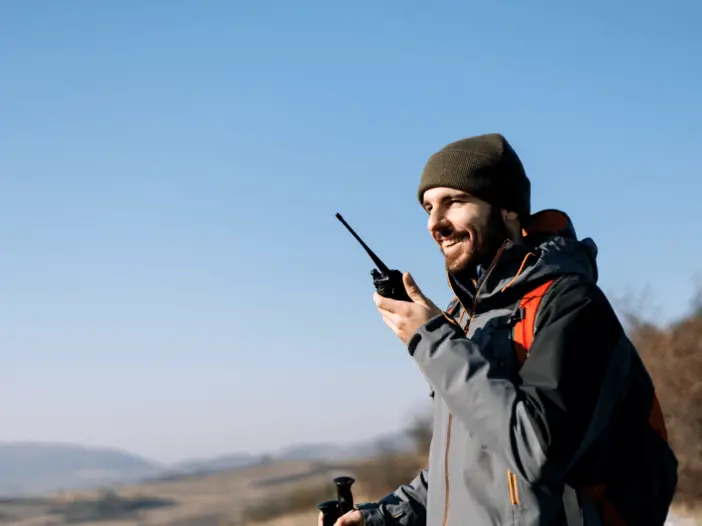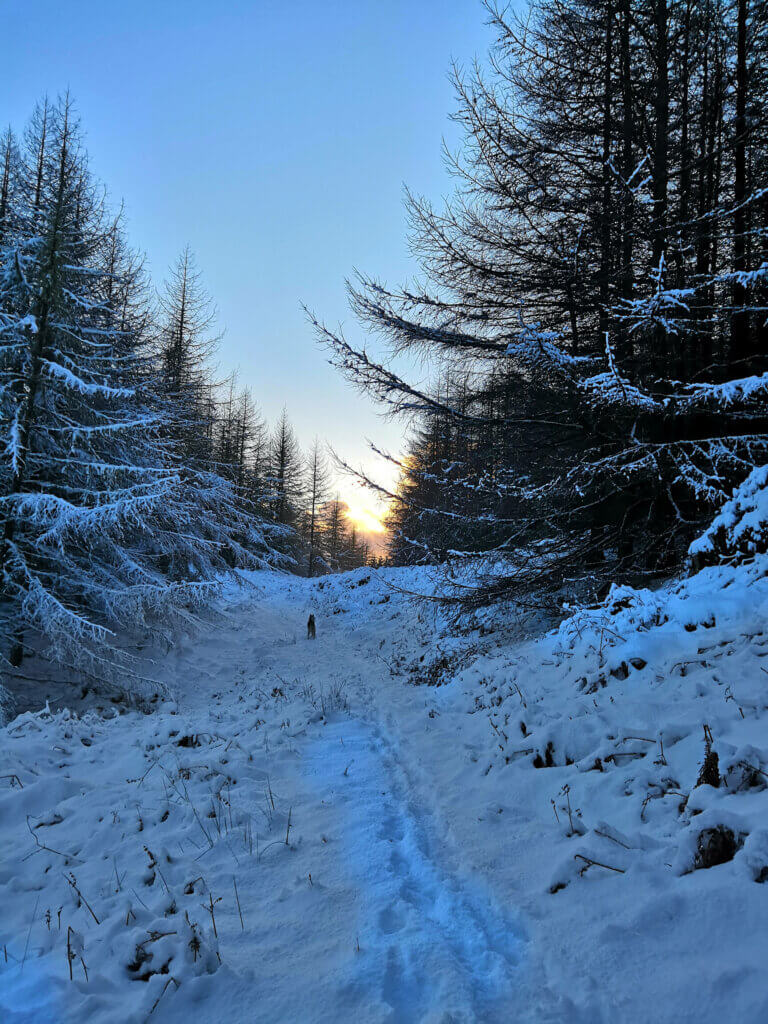
Communication
Highlighting the benefits of two way radios for hiking. Discover the reasons why this communication tool should be the first item in your rucksack when you hit the trail
Why I think two-way radios for hiking are essential
In a world where mobile phones are the go-to communication tool, it can be easy to dismiss two-way radios as yesterday’s technology. This post sets out not just to dispel rumours of two-way radios’ imminent demise but to argue the case that they are, in fact, the perfect communication tool for hikers.
This article describes why I believe that two-way radios (or walkie-talkies) should be the first item on any hiker’s checklist.
Let’s start with a tale that was the personal catalyst in persuading me that two-way radios when hiking are an absolute must.
I was lucky enough to be brought up and spend most of my adult life in the West Highlands of Scotland. I took to the hills at an early age, and my love of hiking has never waned.

Over the years, I tramped all over the highlands of Scotland. I considered myself a responsible and safe hiker. I understood the Scottish weather (mostly wet), I always dressed accordingly, took the right precautions, let people know where I was planning to go etc.
The day I came to grief, I wasn’t on a big hike or exploring new territory. I was out walking Wiki, my young, boisterous, and rather daft Northern Inuit dog.
It was a walk I had known since childhood and was completely comfortable with. I had walked the same route thousands of times.
On a narrow path running alongside a stream, I lost my footing, somehow went over my ankle and heard a sickening crack. I was in trouble, I was a mile from the nearest road.

Worse than this, it was just a dog-walk, so I hadn’t told anyone where I was going, and when I eventually stopped screaming, I was horrified to find there was no mobile signal.
It was cold and snowing, and I was effectively immobilised, the dog was loving it, though!
I was lucky, another dog-walker found me an hour later, and I survived to tell the tale. But it changed the way I looked at even the most basic hike into the hills. I now pack my walkie-talkies whenever I hike.
The benefits of two-way radios for hiking
What this cautionary tale tells us is that no matter how experienced and confident you are, accidents can and will happen. I was lucky enough to learn a harsh lesson and live to take to the hills again.
This is ultimately the first and most important benefit of using two-way radios for hiking:
-
Hiking walkie-talkies provide increased safety
I am always acutely aware of the dangers of hiking in remote locations, yet I still came to grief. When I had my accident, I knew that most of the walk I was on was covered by a mobile signal. Just not the part where I had my accident!
I had been lulled into a false sense of security by familiarity with the walk and knowing I could phone for help. Had I not been found; a two-way radio would at least have let me broadcast to emergency services when the inevitable search began.
But where two-way radios for hiking really shine is on group hikes into dense wilderness:
No reliance on a mobile signal – This is a biggie; the very nature of hiking means that we often find ourselves out of reach of a signal. Even where there is a signal, it is often patchy with lots of dead spots.
In-built safety features – Many two-way radios come with safety features that can include:
- Man down – This automatically detects motions that could mean the user has fallen and will automatically send out a broadcast.
- Lone worker – Developed for industry, this feature works equally well for hikers. It requires the hiker to key the transmit button at certain intervals. If this doesn’t happen, then the radio begins to transmit an emergency signal.
- Emergency Button – As the name suggests, this is a button that is easily accessible and can be quickly pressed in the case of an emergency.
Easy to operate – Even with the thickest of gloves and in the harshest of weather, walkie-talkies can be easily operated. Just press the transmit button, and you’re good to go.
-
Robust
Just look at a modern smartphone the wrong way, and the screen can shatter, and this is in the best of circumstances. In a screaming blizzard or pelting rain, unless you have armour-plated and waterproof protection, sooner or later, a smartphone is going to succumb to the elements.
This just isn’t the case with two-way radios. Even fairly basic models that cost less than a hundred pounds (£), can be waterproof and shockproof and will easily survive the rigours of even the harshest hike in the worst conditions.
-
Battery life
Mobile phone battery life isn’t great at the best of times. But take them into the wilds where reception is patchy, and the constant searching for a signal kills the battery. The battery life on a good set of two-way radios will easily last a full day’s hike and possibly longer.
-
Two-way radios are a cost-effective solution
Two-way radios for hiking might seem like a bit of a luxury, but when you consider the safety aspect of them, then nothing could be further from the truth. It is hard to put a price on safety.
But here’s the thing – Two-way radios are incredibly well priced. For instance, the Motorola Talkabout T82 Extreme is certified as IPx4 rated, which gives them extreme weatherproofing capabilities. The best bit – two of these will cost you less than the cheapest and most basic smartphone.
What to look for in a two-way radio for hiking
Two-way radios are relatively simple devices, and it is hard to go wrong when buying them if you take a few considerations into account:
- Range – The stated range on any model needs to be taken with a large pinch of salt. This represents the absolute maximum range in ideal conditions, and let’s face it, these conditions are rarely faced on hikes. It still makes sense to go for the best range your budget allows though.
- Waterproof – Look for radios that have an IPx4 rating
- Battery life – The longer the better, look for models that offer 18hrs or more
- Frequency – Two-way radios come in UHF and VHF frequency bands. UHF is the better option for hikers as it allows more penetration through features like trees and hedges. VHF works best in open spaces but doesn’t have this penetration power.
- Multiple channels – This is a must, and as a big aside, in most countries, one channel is set aside as the emergency channel. Most walkie-talkies should have the ability to broadcast on this channel, but it is worth checking this first.
Two way radios for hiking – Over and out
I freely admit that I was dubious about the benefits of two-way radios for hiking, but I was an instant convert the day I discovered just how easily accidents can happen. For less than the price of a good set of hiking boots, a two-way radio is an essential item not just for long wilderness hikes, but even for quick jaunts into the forest with the dog.

Leave a Reply